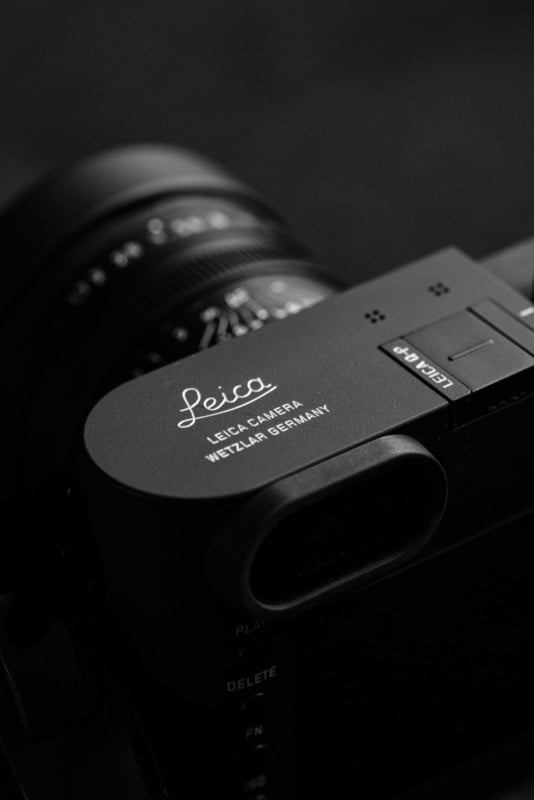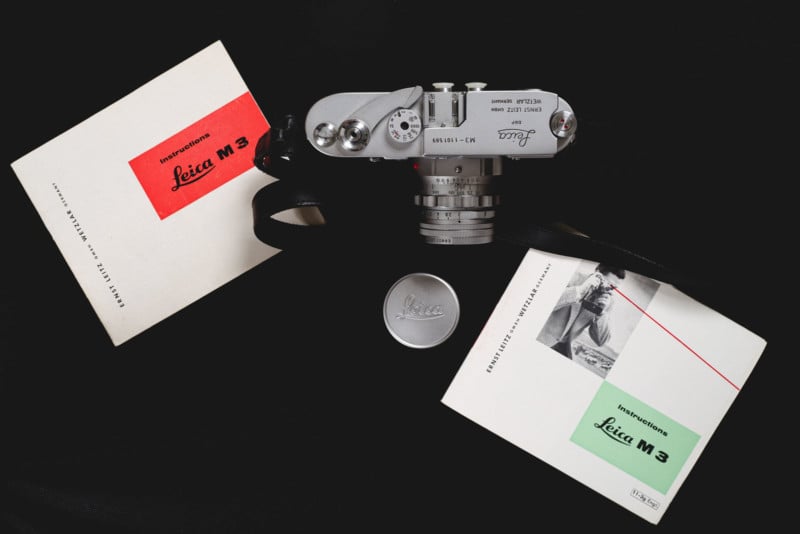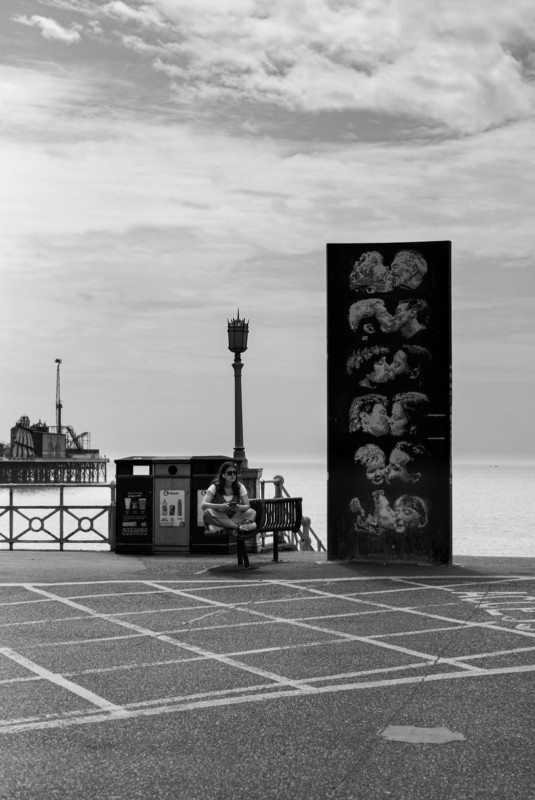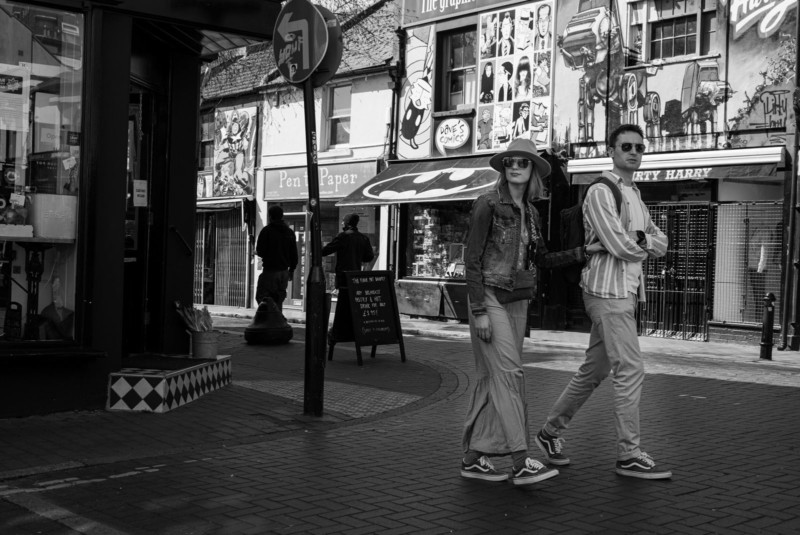![]()
I used to view digital Leica cameras as a classic example of style over substance. Surely this is a perfect example of a company developing a luxury brand on the back of their, admittedly wonderful, history and heritage.
In a world of ever-increasing sensors, rapidly improved autofocus, and seemingly endless technical innovations to assist the photographer, to my mind Leica appeared to have fallen behind the likes of Canon, Nikon, and Sony.
That being said, I have long admired the history of the company and the pride it takes to produce beautifully crafted cameras, upholding the long-held belief that design and excellent craftsmanship are of paramount importance irrespective of the impact this will have on cost.
![]()
As a lover of mechanical watches, I fully understand why many can see no sense in spending thousands on such a watch when a mass-produced quartz watch will perform the same function, in most cases be more accurate, and usually have many more features. For me, that misses the point.
I am attracted to, and buy into, the history, precision engineering, design, and finally the knowledge that my watches will still look and perform as well as they do today in decades to come. It is this aspect of my character that kept me interested in Leica and, despite my reservations, why I could never dismiss them completely.
Having made the transition from Nikon to Fujifilm and built up a collection of prime lenses I started to look for a fixed lens “grab and go” camera for those days when I wanted to have a camera on me but wasn’t actually going out to take photographs. The obvious choice at the time was the Fujifilm X100F but Leica was still an itch that needed scratching and the Leica Q was proving hard to ignore.
Eventually, I followed my heart and made the investment in the Leica Q-P. It certainly was an investment, given that it cost more than 3 Fujifilm X100F cameras!

Within minutes of unboxing and taking a few test shots, any doubts I had were cast aside and so began my Leica journey. When I hold a Leica the quality and attention to detail are immediately apparent and there is no doubt at all that this is a premium product. This is even before appreciating the images these cameras can produce.
I have been using my Leica Q-P alongside my Fujifilm equipment for 2 years and during this time, as with all Leica fanboys, it has resulted in an ongoing fascination with all things Leica.

The Leica M range has long been a bit of an anomaly in the world of modern digital cameras. A manual focus rangefinder with limited technical specs and significantly more expensive than many of the offerings from the other leading brands. Then there is the cost of Leica lenses to add to the equation. Given the success of these cameras, I was interested to know why people happily spend thousands on a Leica M when you can get a higher resolution, feature-packed camera for less money from any other manufacturer.
I was fortunate enough to borrow an M240 and subsequently an M10. Apart from my observations above regarding the feel of a Leica, what I immediately bought into was the change in user experience. When using a manual focus rangefinder I am forced to slow down, think more about the composition and what I want to capture. I accept this is as much to do with my aging eyes as my unfamiliarity with the rangefinder!
With my Fuji X-Pro3, I can walk the streets shooting all day and know that nearly all of the images will be in focus and perfectly exposed. Later, in Lightroom I can manipulate these files to my heart’s content, changing the color grading or converting to my favorite aesthetic of black and white. This knowledge inevitably leads to me overshooting with the result that I take thousands of photos that are technically sound but the end result is a small percentage of “keepers”.
What I find when using the Leica M is my approach to capturing moments is more considered. Also, there is the feeling that I am more connected to the camera, and rather than taking photos I am making them. The end result is as much down to my input and abilities as the technical wizardry of the little box I am using. Essentially, it presents a different challenge for me as a photographer and therefore I enjoy the process even more and get greater satisfaction from the final image. I also take significantly fewer photos but the percentage of “keepers” increases significantly.

Clearly, this is not something that will appeal to everyone. If you are only interested in the final image and you prioritize a camera that will do a lot of “heavy lifting” for you over the user experience and process, I would suggest that a Leica M is not for you.
Having enjoyed using both the M240 and the M10 it was inevitable that I started thinking that a Leica M would be a welcome addition to the camera bag. Additionally, given that black and white photography is a passion of mine, the unique Monochrom came into consideration. This in itself raised the next question, does it really make sense to spend all that money on a camera that can only shoot black and white images?
My good fortune continued when I was able to borrow an M10 Monochrom for a few days. Having read countless articles and watched endless reviews on the benefits of a black and white sensor, I was curious to see if the images were significantly different and/or better than the images taken on the X-Pro 3, Leica Q-P, the Leica M240, and Leica M10 and converted into black and white in Lightroom.
From my perspective, the short answer is no. But that proved to be the wrong question for me.
I am able to create the look I want in Lightroom irrespective of the camera used. Whilst I agree there is a “Leica look” I would almost certainly be deluding myself that given a selection of images, I could say with 100% accuracy which ones have been taken on a Leica Monochrom. What I have found with the Leica Monochrome is that the images taken require little or no post-processing and therefore I can spend more time behind the camera rather than in front of the computer.

I have already mentioned the different user experience with a Leica M. To add to that, when using the Monochrom I find that knowing I can only capture black and white images has a significant impact when I am on the street. Instead of being distracted by color, my eye is drawn to subjects in the right light as well as by contrast and texture. This ultimately results in capturing more of the type of black and white images I enjoy.
The questions I realized I should have asked are; is the act of taking the photos more enjoyable; is it easier to achieve the desired look and probably most importantly, does it change the subjects I look for or notice, knowing I can only shoot in black and white? The answer to all of these is an emphatic yes.
Having returned the M10 Monochrom the decision was made to add to the camera bag, again! Budgetary constraints dictated that I opted for a used M246 Monochrom. Luckily I sourced a “like new” copy and for the last few months, this camera and the 50mm Summarit f/2.4 have been glued to my hand.

The purpose of this article is not to convince the Leica skeptics that they should swap brands and seriously diminish their bank balance by purchasing what are unquestionably very expensive cameras and lenses. It is merely to explain why as both a photographer and someone who has a weakness for beautifully designed and manufactured products I have bought into the Leica world and happily fallen for the charms of the unique Leica Monochrom.


Thanks for reading and keep on enjoying your photography irrespective of what you shoot with.
About the author: Maurice W Webster is a documentary and travel photographer based in Sussex, England. The opinions expressed in this article are solely those of the author. You can find more of Webster’s work on his website and Instagram. This article was also published here.
Author: Maurice W Webster
Source: Petapixel



